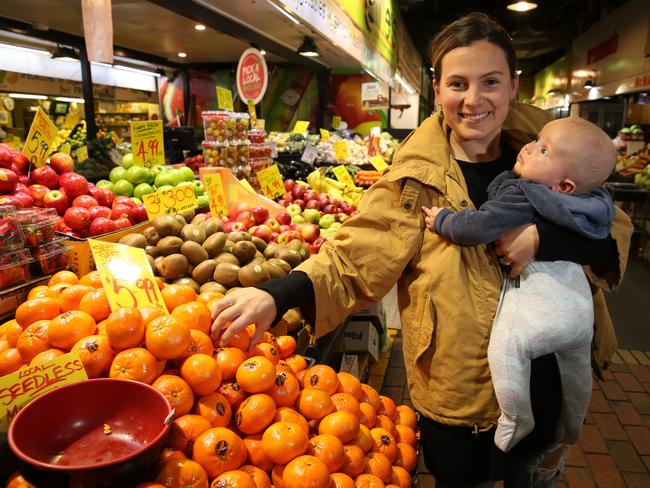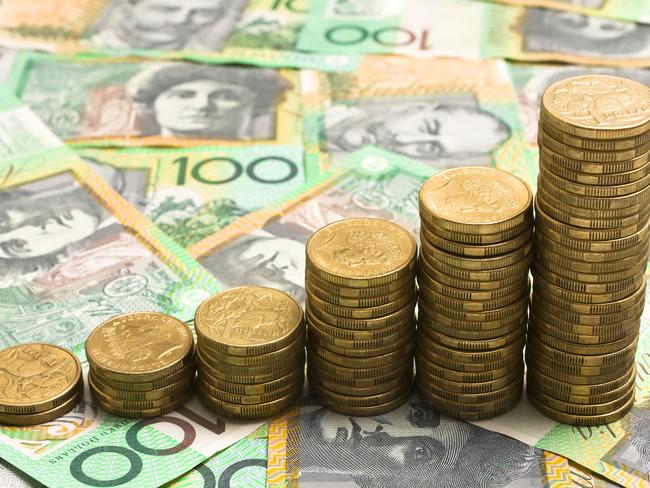The hidden price rises that are crunching Australians’ cost of living
MANY price rises are sneaking below the radar of Australians and dramatically affecting their cost of living as they become harder to dodge.
Costs
Don't miss out on the headlines from Costs. Followed categories will be added to My News.
HIDDEN price rises are sneaking below the radar of many Australians and dramatically affecting their cost of living.
As surging energy prices dominate debate about household financial pressures, they also are masking big increases in other costs that are climbing even faster.
A News Corp Australia analysis of fresh Bureau of Statistics data shows that several common expenses have increased at more than twice the pace of overall inflation over five years.
Many are difficult to dodge, such as medical bills, council rates and education expenses, which adds to the pressure on households already hamstrung by flat wages growth.

The statistics show that electricity prices climbed 25 per cent in the five years to June while overall inflation is up 10 per cent.
Additionally:
• Child care costs rose 44 per cent;
• Medical and hospital expenses jumped 39 per cent;
• Council rates were up 32 per cent;
• Gas 31 per cent;
• Secondary school fees 27 per cent.
Baillieu Holst chief economist Darryl Gobbett said big increases were coming from services rather than traditional consumer goods such as clothing, electronics and cars, which were falling in price globally.
RELATED: Confusing power bills leave us in the dark
“If you look at council rates and education, they’re not subject to competition, and a lot of the structure of healthcare is public service-type wages,” he said.
Mr Gobbett said electricity and gas prices were front of consumers’ minds because of political controversies and the push towards renewable energy.
“A lot of this is unavoidable. You can’t dodge things such as council rates. People may be paying more for council rates they do for electricity and gas, and there needs to be more of a focus,” he said.

Personal budgeting specialist David Rankin said while price rises in petrol, food or mortgage interest rates usually received instant attention, increases by service providers crept up by stealth.
“Because these are less tangible they have a tendency to fly under the radar,” he said.
Mr Rankin likened trying to cover rising costs with putting Contact on a schoolbook “when you try to get rid of a bubble, and you push that bubble down, but it never goes”.
“I think if you have just one big ticket item, such as healthcare, it has a knock-on effect in every other part of your finances.”
SHOPPING: The supermarket trick to save cash
The ABS data shows food and drink prices overall climbed less than 7 per cent in five years but there were spikes in beef (up 24 per cent) and vegetables (up 20 per cent).
Recreation and sporting services costs jumped 21 per cent and veterinary services 19 per cent.
It’s something Lucy Farran, 27, is experiencing first-hand with fiance Graham Charbonneau, son Parker and dog Nellie.
“We just booked Parker in for swimming lessons and a half-hour lesson is $18,” she said.
“We are both on professional wages and are having a pretty hard time saving a deposit for a house. We just don’t know where our money goes.”
Mr Gobbett said the rising cost of services was partly driven by Australia’s public sector wages growing faster than inflation, while private sector wage growth was weaker.
“People used to expect that if your council rates went up by 3-4 per cent you would at least get a wage increase by 4-5 per cent,” he said.
Not any more.
SIX WAYS TO FIGHT HIDDEN PRICE RISES
• Several household services are based on your usage — electricity, gas and water — so search online for practical ways to cut back. While on the web, use comparison sites to check for better deals for all major expenses.
• The largest savings can come from paying less for home loans and insurance. Banks and insurers offer cheaper rates to new customers so call yours and ask for the same.
• Other household services are difficult to dodge, so savings must be found elsewhere. The best place to start is recent bank and credit card statements — search for recurring direct debits that you may have forgotten you are paying.
• Slashing expensive debts delivers huge savings. It’s pointless leaving cash sitting in a bank account if you have a $10,000 credit card debt with a 20 per cent interest rate that’s losing you $2000 a year.
• Write down your financial priorities and don’t be afraid to spend money on stuff you enjoy. But if your cash is being wasted on unimportant things, it has to stop.
• When savings options are exhausted, look for ways to boost income such as joining the sharing economy, a small home-based business, selling second-hand goods or part-time work.
Originally published as The hidden price rises that are crunching Australians’ cost of living


